|
Saturn System

Saturn is a notoriously difficult planet to image. However what a beauty she is!
May 28, 2012
The first good picture of this season.
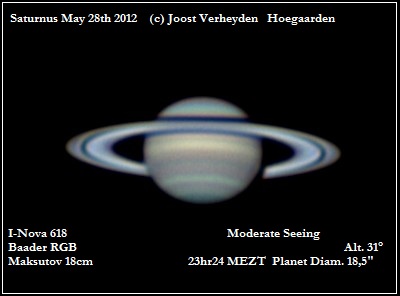
May 15 2012
After long, long weeks of rain and showers, we finally had one single clear night last Saturday (12th May).
Saturn is now clearly rising slowly over the SouthEastern horizon.
This is the resulting picture:
This is an image from May 12-13th. In the B/W image (Red Channel) there are some intriguing details. It's not clear yet if these are real or artefacts.
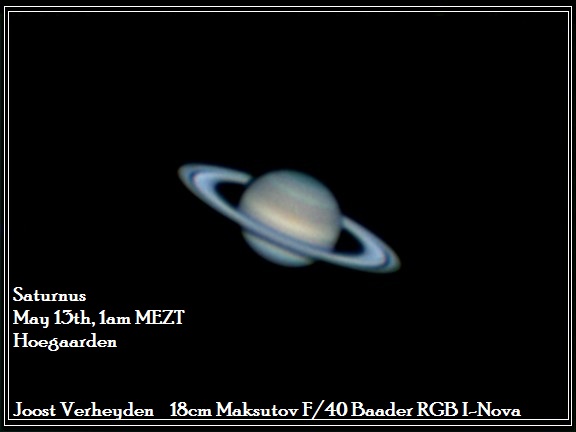
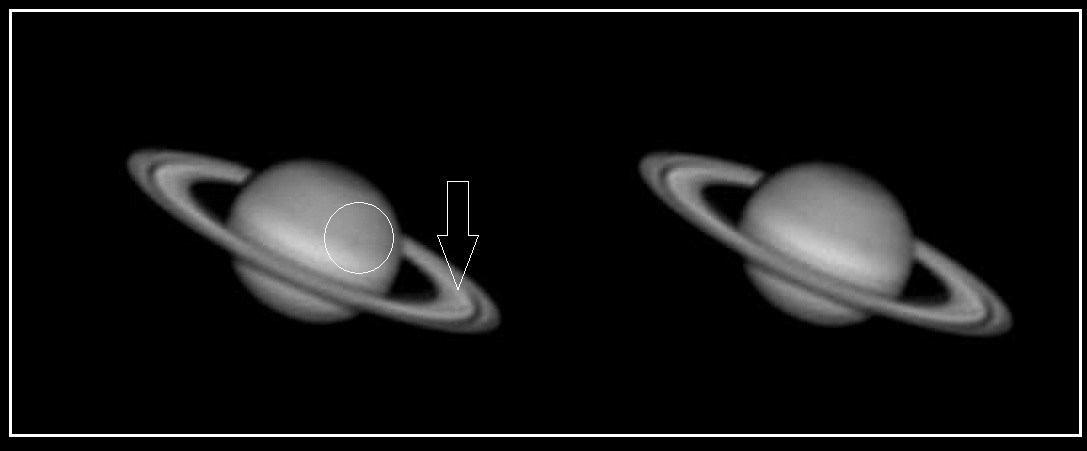
Next Saturn image taken by Olivier Bonameau on April 20, 2012 with the C8:
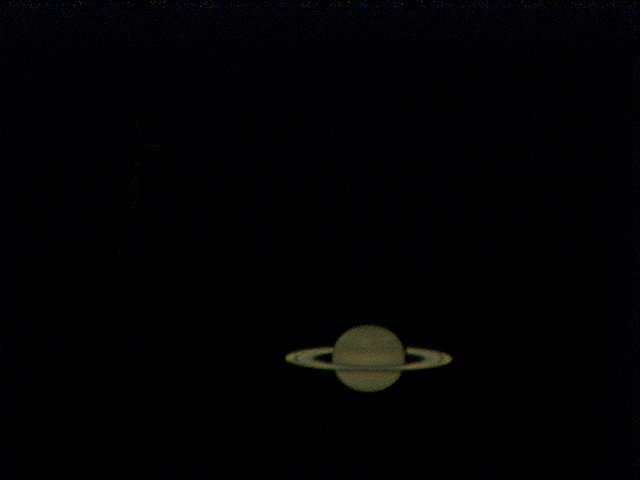
Next Saturn image taken in the morning of February 9, 2012.
This must have been the cold record as it as freezing 13° Celsius. Saturn only got an altitude of 29° at that point, the planet hoovered to the left of Spica (main star of Virgo). Alhough Saturn is famous for it's very dark surface, the mist added to the show and dimmed the image considerably.
The resulting frame rate of the camera (images per second) dropped to 1 or 2 frames per second (fps). On other occasions, it's possible to achieve 50 to 70 fps with brighter planets such as Mars.
This is my first image taken of Saturn using the RGB method (the one below of March 11, 2011 is made using a color Philips webcam).

Compared to teh image below you can see that the Saturn storm has disappeared. ALso the inclination of the ring system changed, the rings are more open.
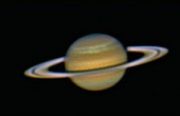
Image on March 11, 2011. The blue line on the Northern hemisphere is clearly visible. This feature is a storm that goes around the entire planet. By end of 2011 it had almost disappeared.
Taken in Meldert with the Maksutov telescope and a Philips SPC900 webcam. This kind of webcam is not any longer produced, it uses a real CCD instead of the common CMOS.

|